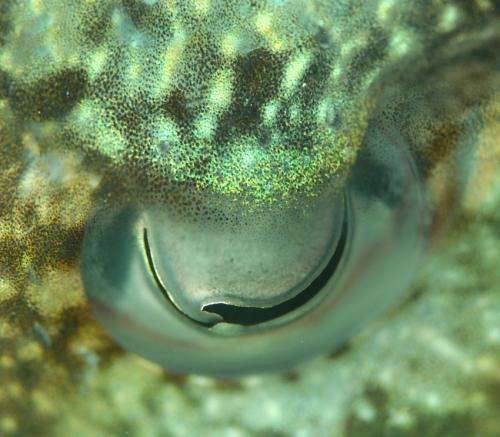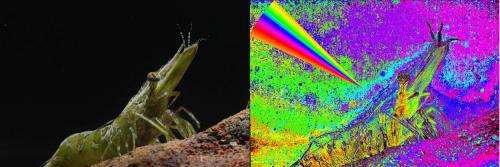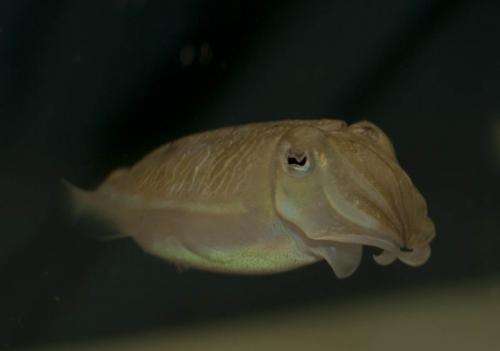Cuttlefish have high definition polarization vision, researchers discover

Cuttlefish have the most acute polarization vision yet found in any animal, researchers at the University of Bristol have discovered by showing them movies on a modified LCD computer screen to test their eyesight.
Cuttlefish and their colourblind cousins, squid and octopus, see aspects of light – including polarized light – that are invisible to humans, giving them a covert communication channel. The Bristol study, published today in Current Biology found that cuttlefish were much more sensitive to polarization than previously thought.
Lead researcher Dr Shelby Temple from the Ecology of Vision Laboratory at the University of Bristol said: "Just like colour and intensity, polarization is an aspect of light that can provide animals with information about the world around them. If you've ever put on a pair of polarized sunglasses glasses to cut the glare from water or the road, or gone to a recent 3D movie, then you've observed some aspects of polarized light."

With collaborators at The University of Queensland, Brisbane, Australia, the team gave cuttlefish an eye exam; but instead of measuring their acuity they measured the smallest difference in the angle of polarization the cuttlefish could detect.
Since the team could not ask the cuttlefish what they could see, they took advantage of the chameleon-like colour changes that cuttlefish use for camouflage as a way of measuring whether the animals could detect the polarized stimuli.

"We modified LCD computer monitors to show changes in polarization instead of changes in colour, and then played videos of approaching objects and watched for changes in skin colour patterns to determine if the cuttlefish could see small changes in polarization contrast," said Dr Temple. "Cuttlefish change colour all the time and respond to the slightest movement so they are an excellent model.
"Cuttlefish were much more sensitive than we expected. It was previously thought that polarization sensitivity was limited to about 10-20 degree differences, but we found that cuttlefish could respond to differences as small as one degree."
In addition to measuring the limits of polarization vision in the cuttlefish, the team also modelled how underwater scenes might look to an animal that has such high-resolution polarization vision. Using colours instead of changes in polarization angle they created images of the polarized world that humans can see and showed that there is much more information available in the polarization dimension than was previously known.
Co-author Professor Justin Marshall of The University of Queensland said: "These extraordinary findings suggest that we need to reexamine how we have been measuring the visual world underwater. Cuttlefish may be using the polarization of light much like we use colour, which means we may need to look at camouflage and communication underwater in a whole new way."
More information: High-resolution polarisation vision in a cuttlefish. S. E. Temple, V. Pignatelli, T. Cook, M. J. How, N. W. Roberts, and N. J. Marshall in Current Biology (feb 21).
Journal information: Current Biology
Provided by University of Bristol


















